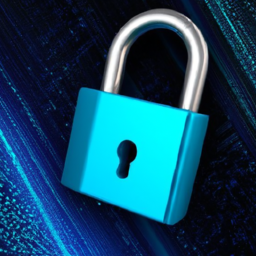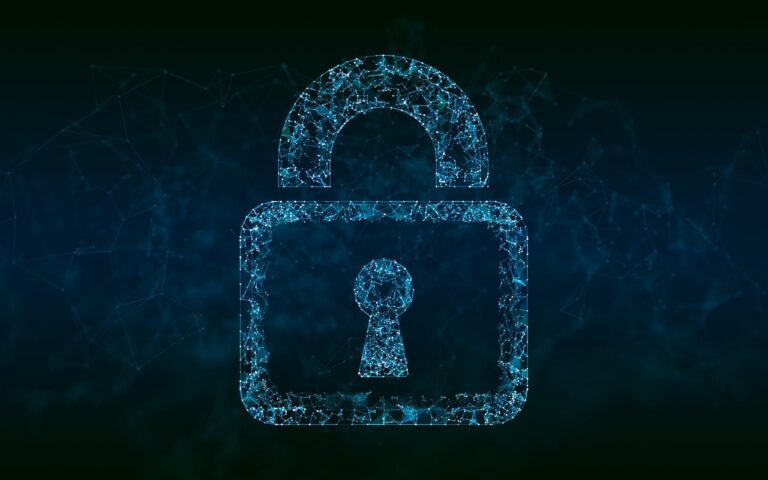What Is A Cyber Hunt Team?
Are you curious about what exactly a Cyber Hunt Team is? Look no further! In this article, we will explore the fascinating world of cyber hunt teams and uncover the crucial role they play in safeguarding our digital world. Discover how these specialized teams proactively search for and mitigate potential cyber threats, making our online experiences safer and more secure. So, let’s embark on this cyber adventure together and unravel the mysteries behind the work of a cyber hunt team.
Definition of a Cyber Hunt Team
Role and Purpose
A Cyber Hunt Team, also known as a Cyber Threat Hunting Team, is a group of skilled professionals responsible for actively searching for and identifying potential threats within an organization’s network environment. Their purpose is to proactively detect and respond to security incidents, often focusing on uncovering and mitigating advanced persistent threats (APTs) that may have evaded traditional security controls.
Composition
A Cyber Hunt Team typically consists of a diverse set of individuals with specialized skills and expertise. This may include security analysts, threat intelligence experts, incident responders, network engineers, and forensic experts. Each member plays a critical role in providing a comprehensive approach to threat hunting and response.
Expertise and Skills
The members of a Cyber Hunt Team possess a wide range of expertise and skills that enable them to effectively identify, analyze, and respond to cyber threats. These skills may include knowledge of network protocols, system administration, vulnerability assessment, digital forensics, malware analysis, and threat intelligence. Additionally, they must have a deep understanding of the organization’s infrastructure, systems, and applications to effectively identify potential vulnerabilities and devise proactive strategies.
Responsibilities of a Cyber Hunt Team
Network Monitoring
One of the primary responsibilities of a Cyber Hunt Team is to actively monitor the organization’s network for any signs of suspicious activity or potential threats. This involves analyzing network traffic, log data, and system alerts in real-time to identify anomalies or indicators of compromise. By continuously monitoring the network, the team can detect and respond to threats before they escalate into major security incidents.
Threat Intelligence Gathering
A Cyber Hunt Team actively collects and analyzes threat intelligence from various sources to stay updated on the latest tactics, techniques, and procedures used by threat actors. By leveraging this intelligence, the team can anticipate potential threats and proactively search for any signs of these threats within the organization’s network environment. This enables them to stay one step ahead of potential adversaries and implement targeted mitigation strategies.
Vulnerability Assessments
To effectively identify and mitigate potential vulnerabilities within the organization’s network, a Cyber Hunt Team conducts regular vulnerability assessments. These assessments involve scanning and analyzing the network for any weaknesses or misconfigurations that could be exploited by attackers. By proactively addressing these vulnerabilities, the team reduces the organization’s overall risk exposure and strengthens its security posture.
Incident Response
In the event of a security incident, a Cyber Hunt Team plays a crucial role in coordinating and executing the organization’s incident response plan. They leverage their expertise to quickly contain the incident, mitigate the impact, and restore normal operations. This involves collecting and analyzing evidentiary data, identifying the root cause of the incident, and implementing remediation measures to prevent future occurrences.
Cyber Hunt Team Workflow
Preparation Phase
In the preparation phase, a Cyber Hunt Team establishes the foundation for effective threat hunting and response. This involves defining the team’s goals and objectives, determining the scope of their operations, and developing an incident response plan. They also establish the necessary tools and technologies, such as a Security Information and Event Management (SIEM) system, to aid in network monitoring and analysis.
Detection and Analysis Phase
During the detection and analysis phase, the team actively monitors the organization’s network using various tools and techniques. They analyze network traffic, system logs, and security alerts to identify potential threats. This phase involves conducting deep-dive investigations to determine the nature and severity of detected anomalies. Advanced threat hunting techniques, such as behavior analysis and anomaly detection, are employed to identify any hidden threats that may have evaded traditional security controls.
Containment and Eradication Phase
Once a potential threat is identified, the Cyber Hunt Team moves into the containment and eradication phase. They quickly isolate affected systems or devices to prevent further spread of the threat and initiate the necessary remediation measures. This may involve patching vulnerabilities, removing malware, or implementing additional security controls to prevent similar incidents in the future.
Post-Incident Activities
After the threat has been contained and eradicated, the Cyber Hunt Team conducts post-incident activities to ensure the organization’s resilience against future threats. This includes forensic analysis to gather evidence for further investigation or legal purposes, as well as conducting lessons learned sessions to identify areas for improvement in the incident response process. The team also updates their threat intelligence data to incorporate new information gained from the incident.
Key Tools and Technologies Used by Cyber Hunt Teams
SIEM (Security Information and Event Management)
A SIEM system is a critical tool used by Cyber Hunt Teams for collecting, analyzing, and correlating security event logs and information from various network devices and applications. It helps in real-time monitoring, alerting, and incident response by providing a centralized view of the organization’s security landscape. The SIEM system enables the team to detect and investigate potential threats by analyzing patterns and anomalies in the collected data.
Threat Intelligence Platforms
To gather and analyze threat intelligence, Cyber Hunt Teams leverage threat intelligence platforms. These platforms provide access to a wide range of threat feeds, security reports, and vulnerability databases, allowing the team to stay updated on the latest attack vectors and indicators of compromise. Threat intelligence platforms help the team identify potential threats and proactively search for any signs of these threats within their network environment.
Endpoint Detection and Response (EDR)
EDR solutions play a crucial role in the arsenal of Cyber Hunt Teams, as they provide visibility into endpoints, such as desktops, laptops, and servers, to detect and respond to advanced threats. EDR solutions monitor endpoint activities and collect detailed telemetry data, enabling the team to uncover any suspicious behavior or indicators of compromise. This helps in the early detection and response to potential threats, reducing the dwell time of attackers within the network.
Network Traffic Analysis Tools
Network traffic analysis tools are used by Cyber Hunt Teams to monitor and analyze network traffic patterns and behaviors. These tools capture and analyze network packets to identify any anomalies or indicators of compromise. By examining network traffic, the team can identify potential threats, such as command and control communications or data exfiltration attempts. Network traffic analysis tools provide insights into the organization’s network activity and aid in the proactive identification of potential security incidents.
Challenges Faced by Cyber Hunt Teams
Large Volume of Data
One of the key challenges faced by Cyber Hunt Teams is the overwhelming volume of data generated by network devices, endpoints, and security tools. Analyzing and correlating this vast amount of data in real-time can be a daunting task, making it difficult to identify and respond to potential threats effectively. To address this challenge, teams leverage automation and machine learning technologies to streamline the analysis process and focus on the most critical security events.
Evading Detection Techniques
Advanced adversaries are constantly evolving their tactics to evade traditional security controls and detection techniques. This poses a significant challenge for Cyber Hunt Teams, as they need to constantly update their knowledge and skills to detect and respond to these evolving threats effectively. Staying abreast of the latest attack techniques and leveraging advanced threat hunting methodologies are essential to overcome this challenge.
Lack of Resources
Managing an effective Cyber Hunt Team requires significant resources, including skilled personnel, advanced tools, and adequate budget. However, many organizations struggle with limited resources, which can impact the team’s ability to effectively hunt for threats and respond to incidents. It is crucial for organizations to recognize the importance of investing in their security capabilities and providing the necessary resources to establish and maintain a strong Cyber Hunt Team.
Adversarial Tactics
Cyber adversaries are highly motivated and employ sophisticated tactics to compromise an organization’s security. They may attempt to deceive or mislead Cyber Hunt Teams by using advanced evasion techniques or launching targeted attacks. The ability to effectively detect and respond to adversarial tactics requires continuous improvement of skills, collaboration with other security teams, and leveraging cutting-edge technologies.
Benefits of Establishing a Cyber Hunt Team
Detection of Advanced Persistent Threats (APTs)
By actively hunting for potential threats, a Cyber Hunt Team increases the chances of detecting advanced persistent threats (APTs) that may have evaded traditional security controls. APTs are often highly sophisticated and stealthy, targeting organizations over an extended period. Proactive threat hunting helps in uncovering these hidden threats and enabling a timely response to mitigate their impact.
Rapid Incident Response
Having a dedicated Cyber Hunt Team accelerates the incident response process, leading to faster detection and containment of security incidents. Through continuous monitoring and analysis, the team can quickly identify potential threats, investigate them thoroughly, and take immediate action to contain and eradicate the threat. This rapid incident response minimizes the impact on the organization’s operations and reduces the overall damage caused by the incident.
Reduction in Dwell Time
Dwell time refers to the duration between when an attacker gains access to an organization’s network and when they are detected and removed. Cyber Hunt Teams actively search for and respond to threats, thus reducing the dwell time by detecting and responding to potential threats in real-time. By minimizing the amount of time adversaries have to carry out their malicious activities, the team significantly reduces the potential damage and financial loss to the organization.
Proactive Threat Hunting
Unlike reactive security measures, Cyber Hunt Teams take a proactive approach to threat detection and response. By continuously monitoring the network, analyzing threat intelligence, and conducting vulnerability assessments, the team actively searches for potential threats before they can cause significant harm. This proactive approach helps to stay ahead of adversaries and improves the organization’s overall security posture.
Importance of Collaboration with Other Security Teams
Information Sharing
Collaboration with other security teams, such as the incident response team, security operations center (SOC), and the red team, is crucial for a Cyber Hunt Team. Sharing threat intelligence, incident reports, and lessons learned enhances the organization’s overall security capabilities. By working together, the teams can collectively identify emerging threats, share best practices, and develop effective strategies to detect and respond to potential security incidents.
Coordination during Incident Response
During a security incident, effective coordination between different security teams is essential for a swift and comprehensive response. The Cyber Hunt Team collaborates with the incident response team to ensure the smooth execution of the incident response plan, including containment and eradication of the threat. Timely communication and information sharing between the teams are crucial for successful incident resolution and mitigating future incidents.
Leveraging Specialized Skills
Collaborating with other security teams allows the Cyber Hunt Team to leverage specialized skills or expertise that may not be readily available within their own team. For example, the red team can simulate real-world attack scenarios to test the effectiveness of the Cyber Hunt Team’s detection and response capabilities. By working together, the teams can bridge any skill gaps and enhance the overall effectiveness of the organization’s security operations.
Common Mistakes to Avoid for an Effective Cyber Hunt Team
Ignoring Threat Intelligence
One common mistake is failing to effectively utilize threat intelligence. Threat intelligence provides valuable insights into the latest threat actors, attack techniques, and vulnerabilities. Ignoring or neglecting to analyze threat intelligence significantly reduces the effectiveness of a Cyber Hunt Team. Regularly integrating threat intelligence into the team’s workflow enables them to proactively detect and respond to emerging threats.
Lack of Regular Training and Skill Development
In the rapidly evolving cybersecurity landscape, technology and attack techniques are constantly evolving. Failing to provide regular training and skill development opportunities for the Cyber Hunt Team can hinder their ability to effectively detect and respond to new and emerging threats. Continuous education, training programs, and participation in industry conferences or events are crucial to maintaining the team’s expertise and staying updated with the latest trends.
Failure to Document Findings
A common mistake is neglecting to thoroughly document findings during threat hunting and incident response activities. Accurate and detailed documentation of findings, including the analysis process, evidence, and remediation measures, is crucial for knowledge sharing and future investigations. Documenting findings also helps in identifying patterns, trends, and potential gaps in security controls, leading to overall process improvement.
Overlooking Historical Data Analysis
Historical data analysis is often an overlooked aspect of threat hunting. Analyzing historical data can uncover previously undetected threats or indicators of compromise that may have gone unnoticed. By analyzing historical data, the Cyber Hunt Team can identify trends, recurring patterns, or suspicious activities that may indicate the presence of a persistent threat. Incorporating historical data analysis into the team’s workflow enhances their ability to detect and respond to potential threats.
Cyber Hunt Team Best Practices
Continuous Monitoring and Analysis
Continuous monitoring and analysis are key best practices for a Cyber Hunt Team. By adopting a proactive approach and continuously tracking network traffic, logs, and other security events, the team can detect potential threats in their early stages. Close monitoring allows for timely intervention, reducing the likelihood of significant security incidents and minimizing potential damage.
Integration of Automation and Machine Learning
To cope with the large volume of data and the need for real-time threat detection, Cyber Hunt Teams should leverage automation and machine learning technologies. Automation streamlines data analysis, enabling the team to focus on critical security events and anomalies. Machine learning algorithms can enhance the team’s ability to detect and classify threats accurately, reducing false positives and improving response efficiency.
Alignment with Business Goals
An effective Cyber Hunt Team aligns its goals and objectives with the broader business goals of the organization. Understanding the organization’s risk tolerance, critical assets, and regulatory requirements helps the team prioritize their threat hunting activities. By aligning with business goals, the team ensures that their efforts are focused on protecting the organization’s most valuable assets and reducing its overall risk exposure.
Regular Evaluation and Improvement
Continuous evaluation and improvement are crucial for the success of a Cyber Hunt Team. Regularly assessing the team’s performance, incident response metrics, and the effectiveness of implemented security controls allows for identifying areas of improvement. By acting on these findings and implementing necessary changes, the team can enhance their capabilities, streamline processes, and stay ahead of evolving threats.
Conclusion
In today’s rapidly evolving cybersecurity landscape, establishing a dedicated Cyber Hunt Team is essential for organizations looking to strengthen their security posture and effectively respond to potential threats. These teams play a critical role in proactively searching for and mitigating advanced attacks that may bypass traditional security controls. By employing continuous monitoring, leveraging threat intelligence, and actively hunting for threats, Cyber Hunt Teams enhance an organization’s ability to detect, respond to, and eradicate potential security incidents. Collaboration with other security teams, consistent training and skill development, and adherence to best practices further improve the team’s effectiveness, allowing them to stay one step ahead of adversaries and protect the organization’s valuable assets.







